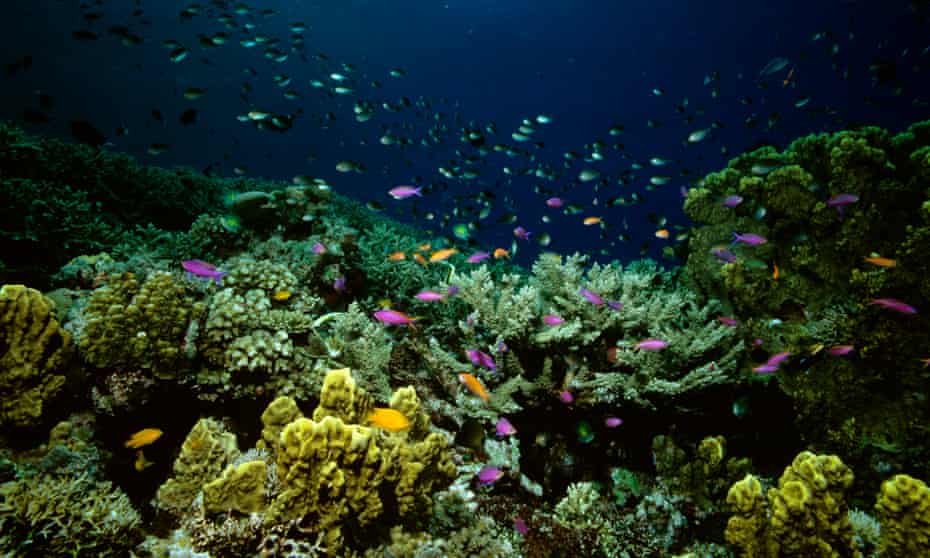Being alive these days means enduring a strange and perhaps historically unique sense of claustrophobia. If you’re paying attention – and if you’ve read Elizabeth Kolbert’s previous books on climate and the ongoing mass extinction – you know that the Earth, its atmosphere, and its oceans are transforming in ways that will mean unimaginable hardships for humans and for billions of other living beings. You also know that almost everything you might do will belch out carbon emissions that will blow us farther down the path to catastrophe. It’s like being stuck in a tunnel and, no matter which direction you attempt to dig, only going deeper.
Kolbert’s most recent book evokes another disquieting sensation, a novel breed of vertigo. In Under a White Sky, she tracks the spiralling absurdity of human attempts to control nature with technology. Grand, Promethean interventions of the sort of which modernity’s boosters were once so proud – a river’s flow reversed to carry waste to a more convenient location, an aquifer tapped to grow alfalfa in the desert, coal and oil extracted from great depths and burned to move machines – spawn unforeseen disasters. Ever grander interventions ensue, which bring fresh calamities, which require still cleverer interventions. By the end of the book, as the zany twists into the full-on apocalyptic, you are left reeling, with little hope to spare.
Kolbert’s reporting is, as always, skilful and subtle. She plays a wry and melancholy Virgil touring varied sterile hells, savouring ironies even when they hurt. She jets across continents, visiting laboratories and warehouse-sized scale models of damaged ecosystems through which scientists traipse like giants. In Chicago, more than a century after the dredging of a canal – “the biggest public works project of its time” – accidentally “upended the hydrology of roughly two-thirds of the United States”, engineers struggle to contain the spread of voracious species of carp introduced to gobble propeller-tangling weeds. Their solution: to electrify the water.
In Louisiana, Kolbert visits Plaquemines Parish, one of “the fastest disappearing places on earth”, a distinction won thanks to flood-control efforts that channel Mississippi river sediment straight into the Gulf of Mexico, preventing coastal lands from renewing themselves. Government engineers now pump mud through miles of pipeline to craft artificial marshlands that will be almost immediately washed away. In Australia, she interviews biologists engaged in a desperate effort at “assisted evolution”, attempting to genetically engineer corals that will survive warmer, more acidic seas as the Greater Barrier Reef dies around them.

Most disturbingly, she explores the “negative emissions technologies” designed to stave off global warming. The most ambitious schemes aim to deflect solar heat by spraying reflective particles into the stratosphere, which may damage the ozone layer, cause drought and acid rain, and bleach all blue from the sky. It also might not work. Even if it does, it will be subject to alarmingly diminishing returns: if 100,000 tons of sulfites will have to be dispersed in the programme’s first year, 10 years in it would take a million tons to produce the same effect. Should the effort ever be interrupted, all the deferred warming would “suddenly manifest itself”, Kolbert writes, “like opening a globe-sized oven door”. This, she suggests with deep ambivalence, may be our only hope.
The vortex in which humankind appears to be caught acquires here a tragic inevitability. The cascading crises we face are “byproducts of our species’ success”. Wisdom might suggest a different path, but “we are stepped in so far, return seems impracticable”. As horrific as all this may be, Kolbert’s poise is reassuring. Her objective distance never cracks; her ability to pull pained amusement from yet “another Anthropocene irony” seldom falters. This composure, though, is only sustainable because she avoids asking certain glaring questions. Who profited from the technologies that created these crises? Who profits now? And who is losing? Is it meaningful to speak of “our species’ success” when so many millions experienced modernity’s spread as something more like devastating loss?
The answers are here if you look for them. The first river-taming levees in New Orleans, Kolbert notes in passing, were built on the orders of French colonists by enslaved African labourers. The massive extermination of wildlife that swept North America in the 19th century unfolded thanks to “the advent of technologies like the railroad and the repeating rifle”, which were not value-neutral innovations but tools of finance capital and colonial expansion. Kolbert visits Isle de Jean Charles, Louisiana, the few remaining inhabitants of which are descendants of exiled indigenous tribes who lived in peaceful isolation until their land began literally to disappear. They “had no say in the dredging of the oil channels” that ate away at their homes, Kolbert writes. “They’d been excluded from the efforts to control the Mississippi, and now that new forms of control were being imposed to counter the old, they were being excluded from those too.”
Kolbert draws no conclusions from this unfortunate episode. Under a White Sky remains a story about technology in which power and violence barely figure. But the moment you take pains to acknowledge the social web from which technological questions can never be separated, the claustrophobia and vertigo shift to horror, and to rage. What you see is not a tragicomic, inexorable process in which humankind is regrettably trapped, but an asymmetrical network of exploitation that has overtaken the planet like an ecocidal virus, extending out from Europe over three centuries and ensnaring every continent so that a few can profit while most are left to sink.
Little wonder then that when Kolbert asks what alternative there is to this vortex of disaster, she, like her subjects, can imagine only additional technological fixes. The possibility of social change has been excluded from the start.

Average Rating